Rotten and Vicious in NYC (and the Overthrow event!)
DOA/Sex Pistols Tour Chapter 32: January 1978
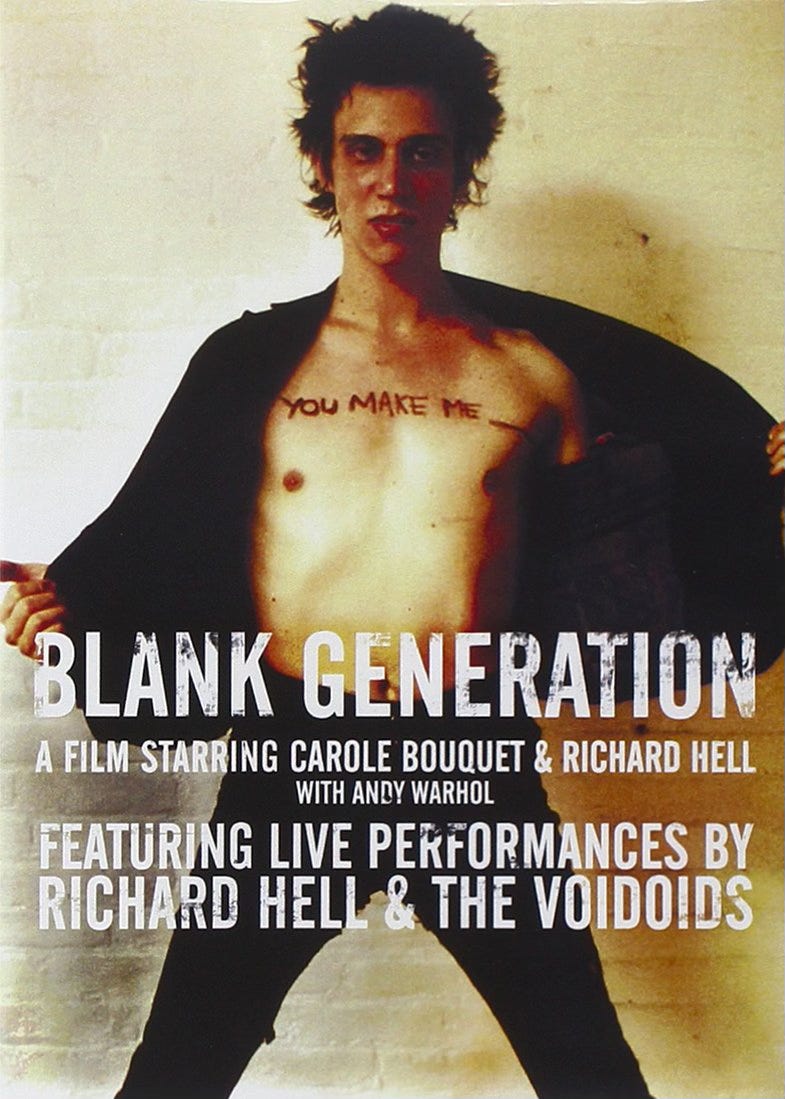
Narrator: In the last episode, Roberta Bayley and John Holmstrom returned from the Sex Pistols tour and life went back to abnormal.
Shortly after we all got back to New York City, a blizzard blanketed the city with several feet of snow. I remember going to the office that day. It was an ordeal since the snow hadn’t been removed from the streets and sidewalks. Roberta Bayley was working the door at CBGB that night and suggested that I should stop by the club later. The PUNK Magazine office was located at 225 Lafayette Street (where MAD Magazine was first published and Paul Krassner published The Realist) so it wasn’t far. Any night Roberta worked the door was a good night, since being in charge of the door was a powerful position: She always had the inside scoop on what was happening.
That night was totally weird: Little train tracks were installed on the floor, reaching all the way to the stage! I soon learned a German film director was shooting a scene and the tracks were in place for a “dolly shot.” (NOTE: The term dolly refers to a wheeled cart, usually one that runs on rail tracks. A dolly shot refers to the camera movement when a camera is mounted on a dolly. In a dolly shot, the camera moves towards, away from, or alongside your subject, which can be an actor, location setting, product, etc.)
To add to the weirdness, the film starred Richard Hell, who was performing with his band the Voidoids that night, and none other than Johnny Rotten was hanging out at CBGB that night! The situation was bizarre: I had just come off the Sex Pistols tour, where Tom Forcade (DOA film producer) and Lech Kowalski (DOA film director) were trying to make an outlaw film about the tour, and on my first visit back to CBGB, there was Rotten at the bar—at a Richard Hell performance... for yet another film. Since Richard Hell and Television were Malcolm McLaren’s inspiration for forming the Sex Pistols, this completed the circle (or something like that). Maybe this was the night that 1970s punk rock died?
The scene turned out to be a great sequence: The dolly shot focused on what someone would see walking into CBGB, then panned down the bar to the stage where Richard Hell performs “Blank Generation.” (Here’ another crazy factoid: The Sex Pistols’ song “Pretty Vacant” was a take on “Blank Generation,” the first song written by the Pistols, and songwriter Glen Matlock says it was based on ABBA’s “SOS”!) A funny side note is that one of the teenagers who was a part of the early NYC hardcore scene, X-Sessive, can be seen throwing confetti at the stage… then high-fives his friend after they see that they made their cue.
Another weird factoid: Future Ramone Marc Bell was the drummer for the Voidoids at the time. So you had a Ramone, Richard Hell, guitar player Bob Quine (who later worked with Lou Reed for several years), Johnny Rotten, and… Cheetah Chrome was hanging out with Rotten at the bar!
It’s difficult to see Rotten and Cheetah in the film, but if you look closely they are the first two people standing at the end of the bar in the dolly shot after it shows the Elton John “Captain Fantastic/Pinball Wizard” game. (Wait… Did I somehow add Elton John and The Who to this story?)
The YouTube video is too blurry to clearly see Rotten’s blue tartan suit, but in a better version of the film it becomes obvious. I think this is the best visual of what it was like to walk into CBGB back in the day. Here’s a clip of the film sequence:
If you’d like to watch the entire film, it’s available on YouTube. It also stars Carole Bouquet (future “James Bond Girl”) and Andy Warhol makes a brief appearance. One of the producers was Roger Deutsch (who becomes a character in future episodes).
FULL FILM (with Spanish subtitles):
If you are a Richard Hell fan you probably already know all about this movie, but it’s interesting to me that so many independent filmmakers started making movies about the punk rock scene at the time, but that’s a story for another day. Don’t worry, I’ll get into it soon.
Then there was Sid Vicious, who ended up in New York City after the band broke up, but wasn’t able to hang out in the city since he overdosed on drugs and was taken to a hospital. The blizzard made it impossible for anyone to visit the poor kid, so he was a lonely boy. Roberta called him and recorded the conversation, and their conversation gives a glimpse into what Sid thought after the band’s breakup.
SID VICIOUS PHONE CALL WITH ROBERTA BAYLEY:
http://www.philjens.plus.com/sid/sidspeaks78.html
NEXT: Tom Forcade takes Holmstrom on a trip to Jamaica in search of Johnny Rotten.
NEWS UPDATE: The Everlast/Overthrow/PUNK Magazine collaboration event
My last newsletter was too long to add the news and photos from the event, so I am now going to tell you all about the event that the Overthrow boxing club put together on January 31st at the Bowery Ballroom. It promoted the new clothing collection for the sub-licensing deal with Everlast, the boxing/sporting goods company. I am thrilled to be associated with Everlast, since I was a boxing fan as a teenager, and when I was publishing PUNK Magazine back in the 1970s. We wanted to cover sports, but while baseball and basketball aren’t very punk—boxing sure is! What’s more punk than a sport where you punch your opponent in the face? We did run a few boxing-related stories back then, and we even planned to put Sugar Ray Leonard (wearing Everlast gear) on the cover, but it didn’t work out.
There were some glitches (the boxing ring set-up took up so much space that the FDNY cut the capacity to a fraction of the club’s capacity), but overall it was a great rollout for the clothing line (which just went on sale at Dover Street in Manhattan, which I will cover soon in an EXTRA newsletter).
Here are a few photos from the event, which was kind of amazing. All photos courtesy of Overthrow and the BFA photo agency:
The “Swag Booth” at the Bowery Ballroom: The clothing line is impressive! Overthrow did a great job designing a wide variety of clothing and sporting goods, from t-shirts to coats, pants, wool caps, even socks!
There were four three-round boxing matches, which were the highlight of the evening’s entertainment. There’s something about a live boxing match that’s dramatic and riveting: These people risk life and limb in order to dominate and defeat their opponent with their fists. Hopefully there will be future events featuring fights and music, it turned out to be a great combination.
The Overthrow boxing club did a great job decorating the Bowery Ballroom with the “corporate sponsors”: White Claw, Forged beer, and Everlast. The PUNK skeleton was redesigned by Overthrow’s graphic designer John Gagliono, who added boxing gloves and a variety of headwear and haircuts to the original image. He also designed all of the clothing and gear: Great job, John!
It’s always been weird to me that a little scribble I did for the first issue of PUNK Magazine to sell a non-existent t-shirt would become such an iconic image!
Miss Debra and I during the Voluptuous Horror of Karen Black performance: She helped design my recent t-shirt design for the new Metropolis t-shirt, and performed as a “Ring Model” for the event.
Miss Debra was the first model to appear between boxing rounds, wearing some of the clothing. ( the wool cap is my favorite!)
The Oxymorrons put on a great show that night. They aren’t a classic punk rock group, they’re really a rap band, but they channel that “Punk Attitude” so I think it’s all good. “Punk” should not be a restrictive thing, in my humble opinion. For instance, I was happy when the great Rick James called his music “punk funk” in the early 1980s, and that the Ramones/CBGB/punk energy made music faster and louder. Don Letts’ “Punk Attitude” film nailed it (you gotta see this!):
It’s almost 50 years since PUNK Magazine was first published. We popularized (but did not create) the term by giving it a visual identity. Now “punk” describes the original, spirit (and attitude) that rock ‘n’ roll music captured in the 1950s, and bands like the Ramones and Pistols recreated in the 1970s. They brought back that rebellious urge of being young, fun and out to create some trouble. I always say: “When Simon and Garfunkel started being called “rock ‘n’ roll” in the 1970s, we needed a new word to describe actual rock ‘n’ roll music.”
Rapper Vic Mensa opened the evening dressed in a a very cool leather jacket. He was definitely dressed for the occasion. He’s a very famous and respected musician so I was honored that he agreed to perform at our event. And I always enjoy seeing people walk all over my artwork!
A backstage photo of some of the clothing models: Yeah! Take that stick out of your butt. Have fun. Enjoy life. And FUCK YOU if you don’t get the joke!
The Voluptuous Horror of Karen Black closed the evening’s entertainment and performed an amazing show. Finally, some authentic New York City punk rock! Thank you Kembra!
Legendary photographer Bob Gruen and famous indie filmmaker Jim Jarmusch (both these guys hung out at CBGB back in the day) were somehow able to get into the show (thankfully!). (Missing from photo: Their awesome wives!)
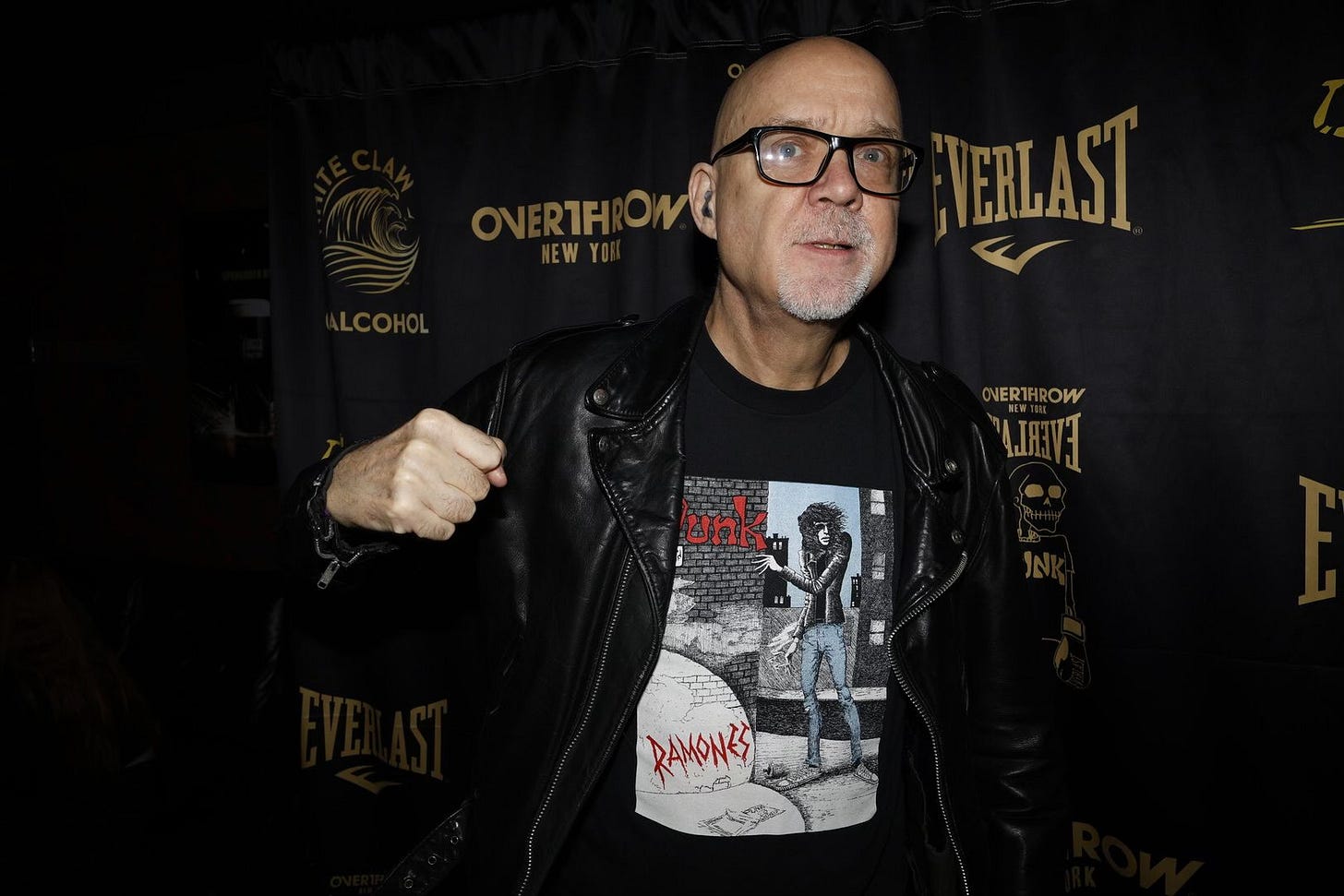
I have heard some feedback about the event from kids (and middle-aged West Coast “hippie punks”) who are so political that they think the clothing line and the event “aren’t punk enough” or something, so I would like to address the situation. Yes, we would like to purists who somehow exist on a small income but are still able to produce our best work. But that’s not how the world works. Let’s be realistic.
The first “punk fashion” trend came from England—before anyone in the USA had heard of the Sex Pistols. English fashion maven Zandra Rhodes became the first internationally famous “punk fashion” designer (yes, even before Malcolm and Vivienne Westwood). She introduced a “punk fashion clothing line” that was sold at fashion boutiques in 1977. All of a sudden, the “First Wave” of English punk wasn’t so much about the bands, but more about expensive fashion fads. “PUNK” t-shirts (that had nothing to do with my magazine) were being sold at Macy’s Department store for $25.00—that would be around $250 in 2024 currency. Zandra Rhodes created hideous dresses with gold safety pins that sold for $600 each… Around $6,000 in today’s currency! So please spare me any “isn’t punk enough” observations when a clothing line using images from the original PUNK Magazine hit the market. Johnny Ramone’s guitars have sold for hundreds of thousands of dollars, art exhibitions where “punk art” sells for big bucks are staged worldwide…
Being poor, starving and broke can seem like a romantic ideal, but that’s not the point of punk culture (and it’s “No Fun”!). At least it’s not how we viewed it back in the day. CBGB bands wanted to sell lots of records and perform at Madison Square Garden. A lot of fans wanted bands like the Ramones and Blondie to stay small and perform at CBGB for the rest of their careers… I understand why people didn’t want to fun to end, but we were mostly a hard-working bunch and wanted to have a larger impact on the culture. I never wanted PUNK Magazine to sell a few thousand copies and stay small forever, I wanted to replace Rolling Stone magazine and for punk to become successful.
Now that a small success is beginning to happen for PUNK Magazine after almost 50 years? I am OK with it. I hope you’re OK with it, too.
Please feel free to comment, like and encourage other people to subscribe. In numbers there is strength. Trying to encourage a community here, folks!




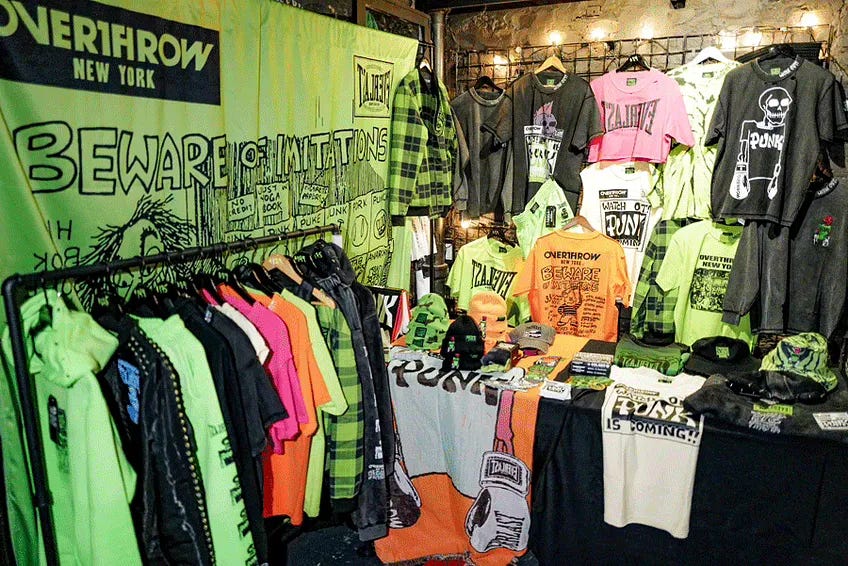
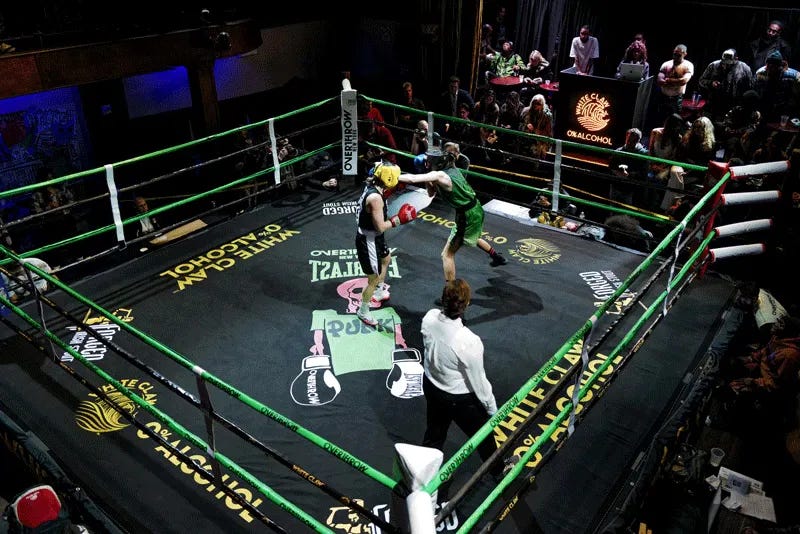
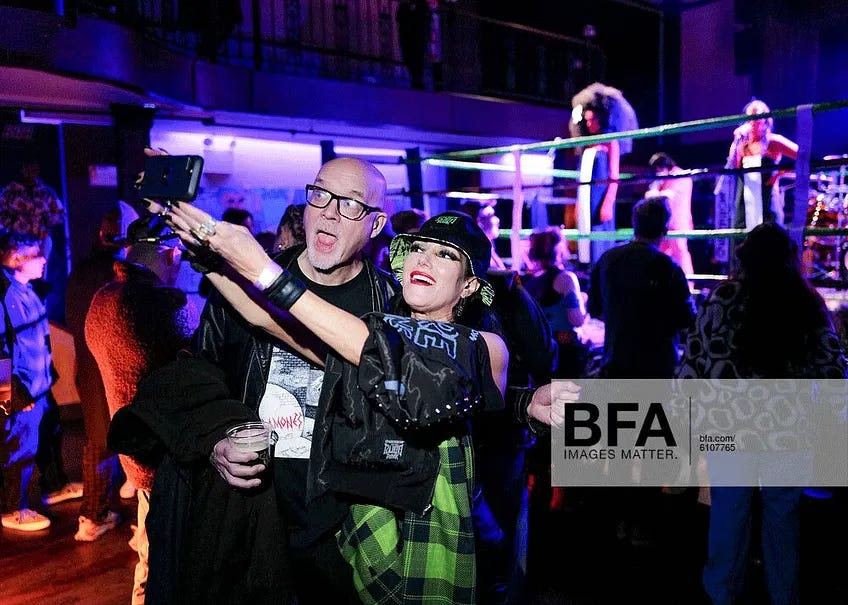


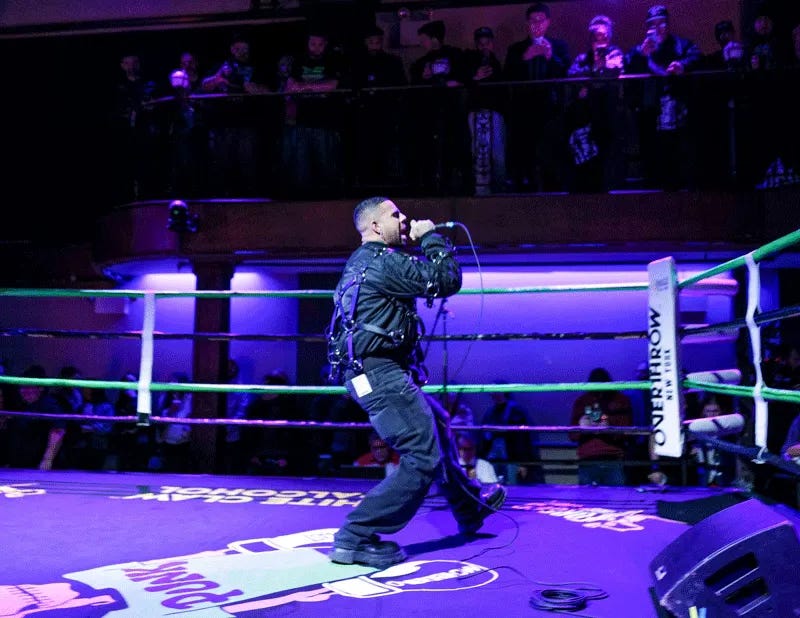
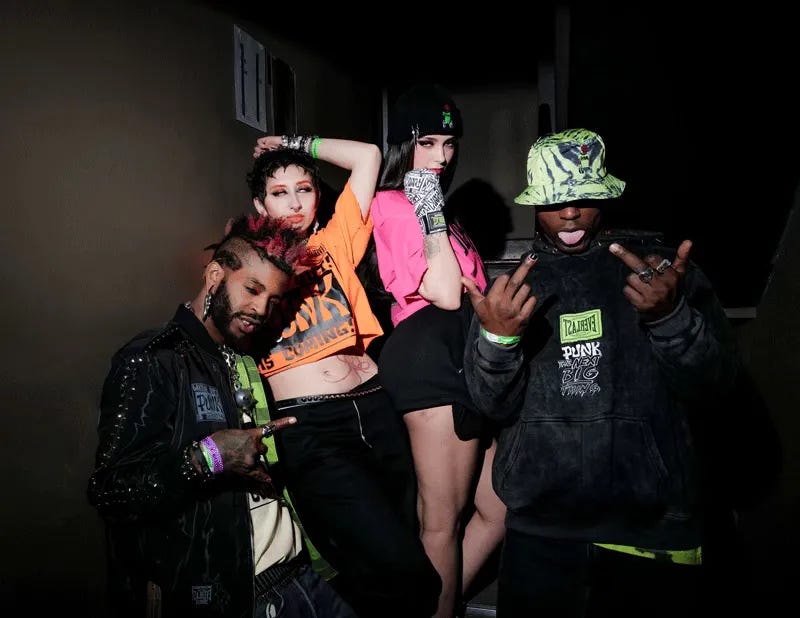
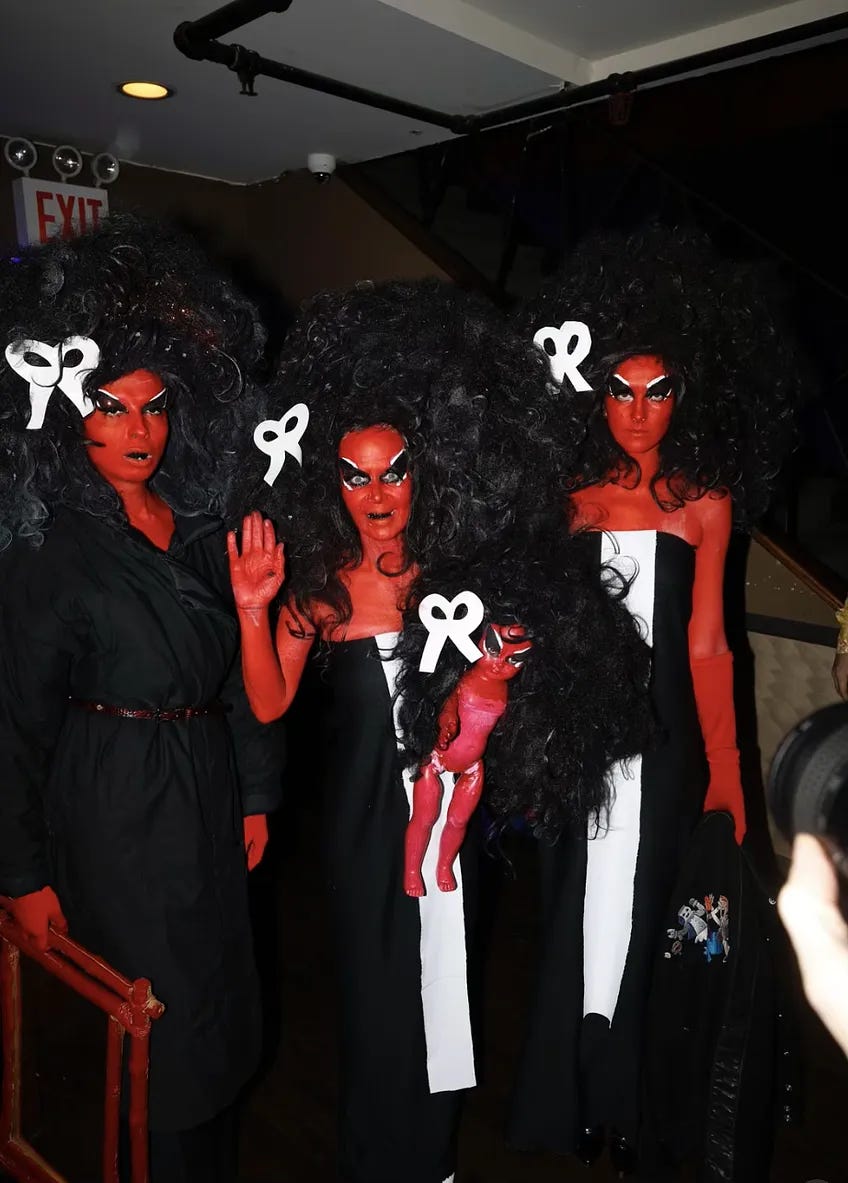

I thought I said baseball and basketball weren't punk... Damn autocorrect! Well, football is certainly more punk than golf. That's the worst. But uniforms are not punk. Placekickers aren't punk.
Right?
I like the version of “Blank Generation” we hear in the movie a lot better than the one that ended up on the record.